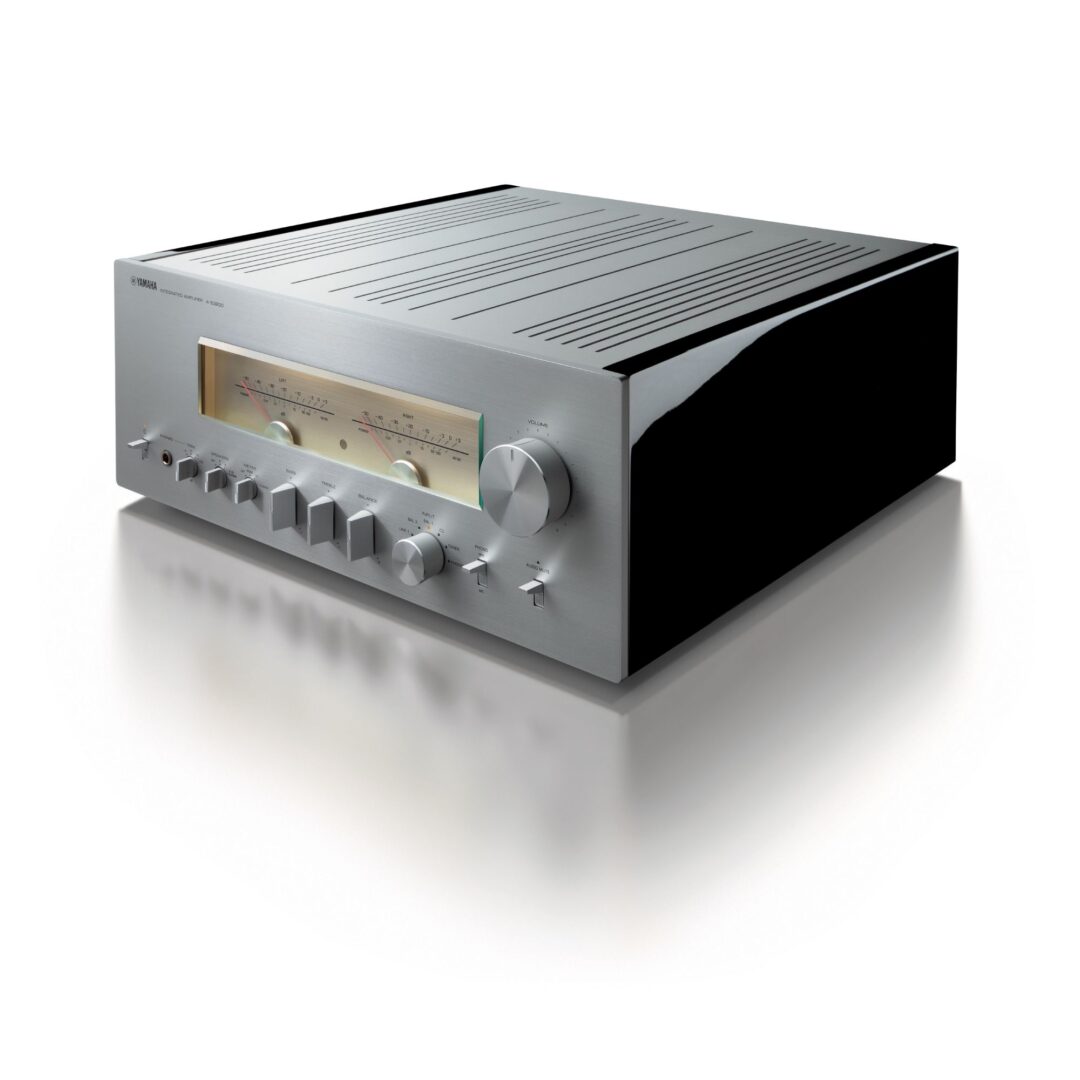The differences are more than subtle, but for many they are not big enough to be worth the extra expense. Because while Yamaha’s integrated A-S2200 is one of the best and most exciting amplifier purchases in its class, the more expensive flagship A-S3200 is in a completely different division.
The two amplifiers share the same technology on the inside, they can do exactly the same thing, and there is a difference of 10 w power in favor of the more expensive A-S3200. Nevertheless, the price difference is noticeable, and although the A-S3200 sounds better, we are talking about such small nuance differences that one must consider whether an extra balanced input is worth the money.
While the integrated A-S2200 is the centerpiece of Yamaha’s new trio of integrated amplifiers, the A-S3200 is the flagship. With handmade power meters, a particularly rigid and resonance-damped chassis, with the aforementioned extra XLR input.
But which is also more lavish with more expensive components, such as Toshin PPSO film capacitors with brass contacts, and chrome-plated brass feet with a conical resting point on the inside, for better damping.
Like the A-S2200, it is also balanced from input to outputs, and it also has no digital connections, streaming or network connection in any form. But it has a very good turntable input for MM and MC cartridges.
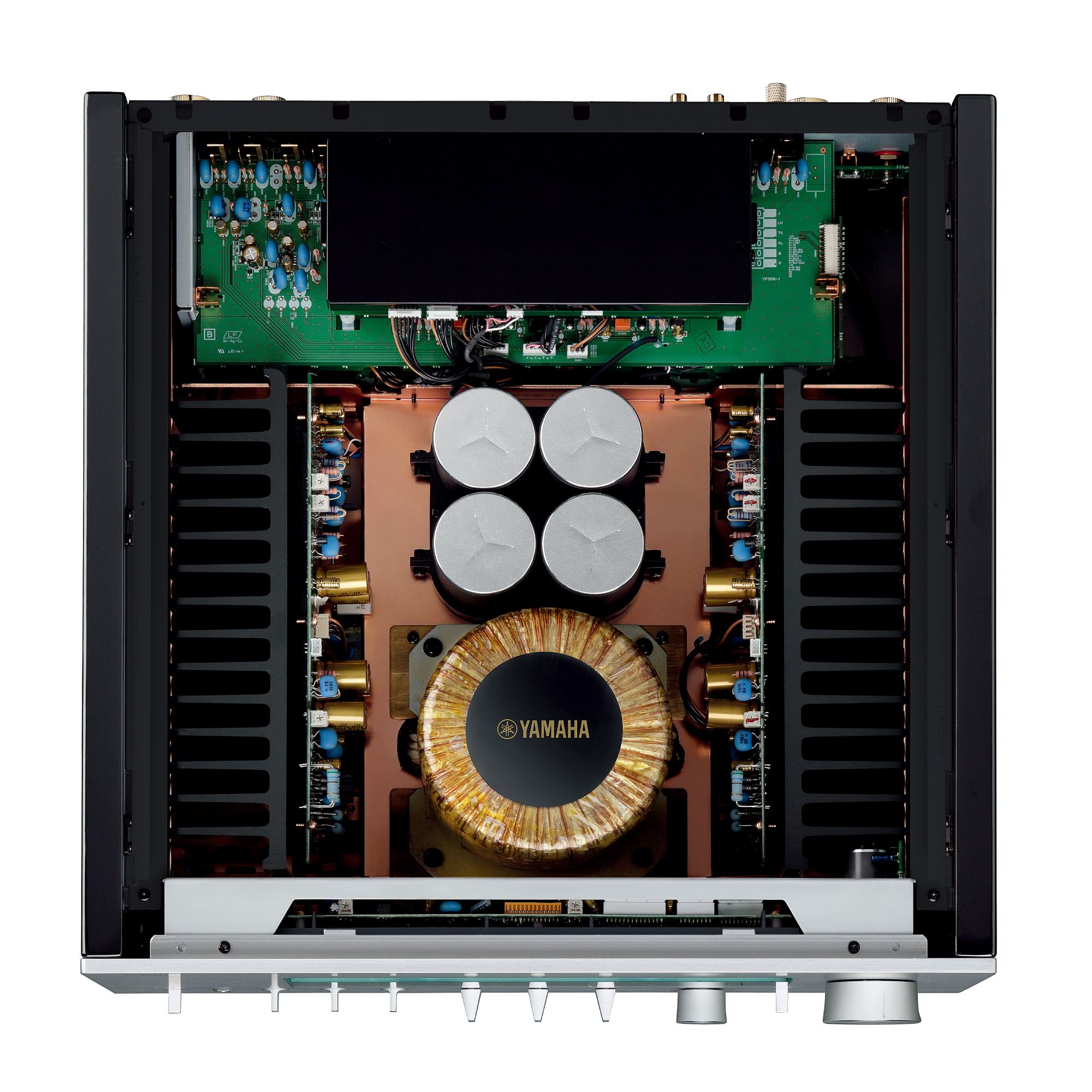
The price places it in the company of McIntosh MA352 on the one hand (also not with network, but with phono), Naim Uniti Nova (with network, but without phono), and above the potent Hegel H390, the flexible Devialet Expert Pro 140 (with both) and the brilliant Electrocompaniet ECI 6DX MKII – with network.
Classic design
The Yamaha amplifier is exceptionally beautifully built. Where the top plate of the A-S2200 has punched air holes, the thicker aluminum plate of the A-S3200 has milled, rectangular openings. The wooden sides in black piano lacquer create a sober contrast to the matt brushed aluminum.
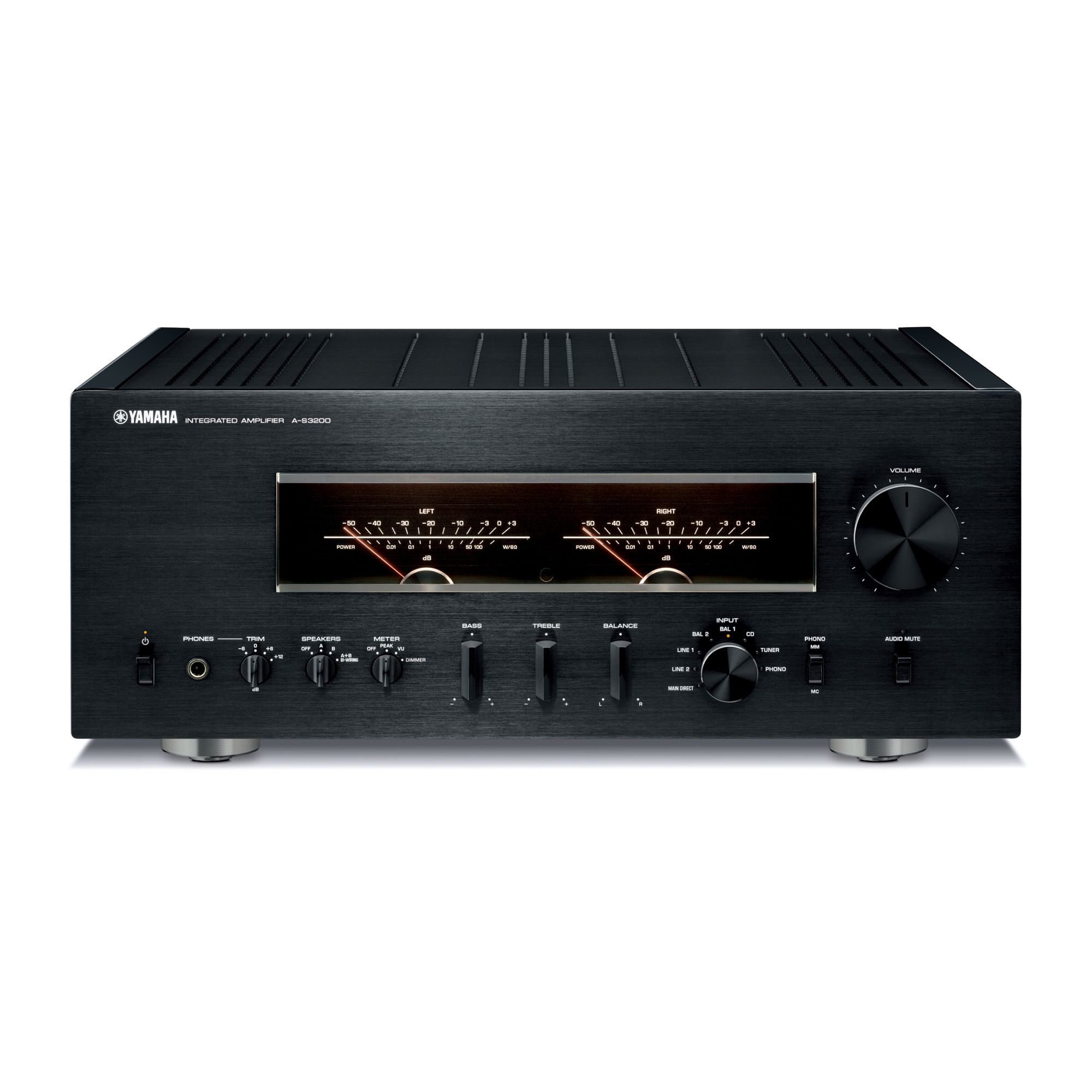
Buttons and potmeters are softly weighted just as they are on the high-end amplifier set C-5000 and M-5000, where the integrated amplifier has taken much of the electrical circuit solution.
The power meters are larger here than on the A-S2200 and the amplifier has more powerful cable terminals that can also take shovels.
The balanced inputs have a switch to invert the phase, and the input sensitivity can be attenuated by -6 dB.
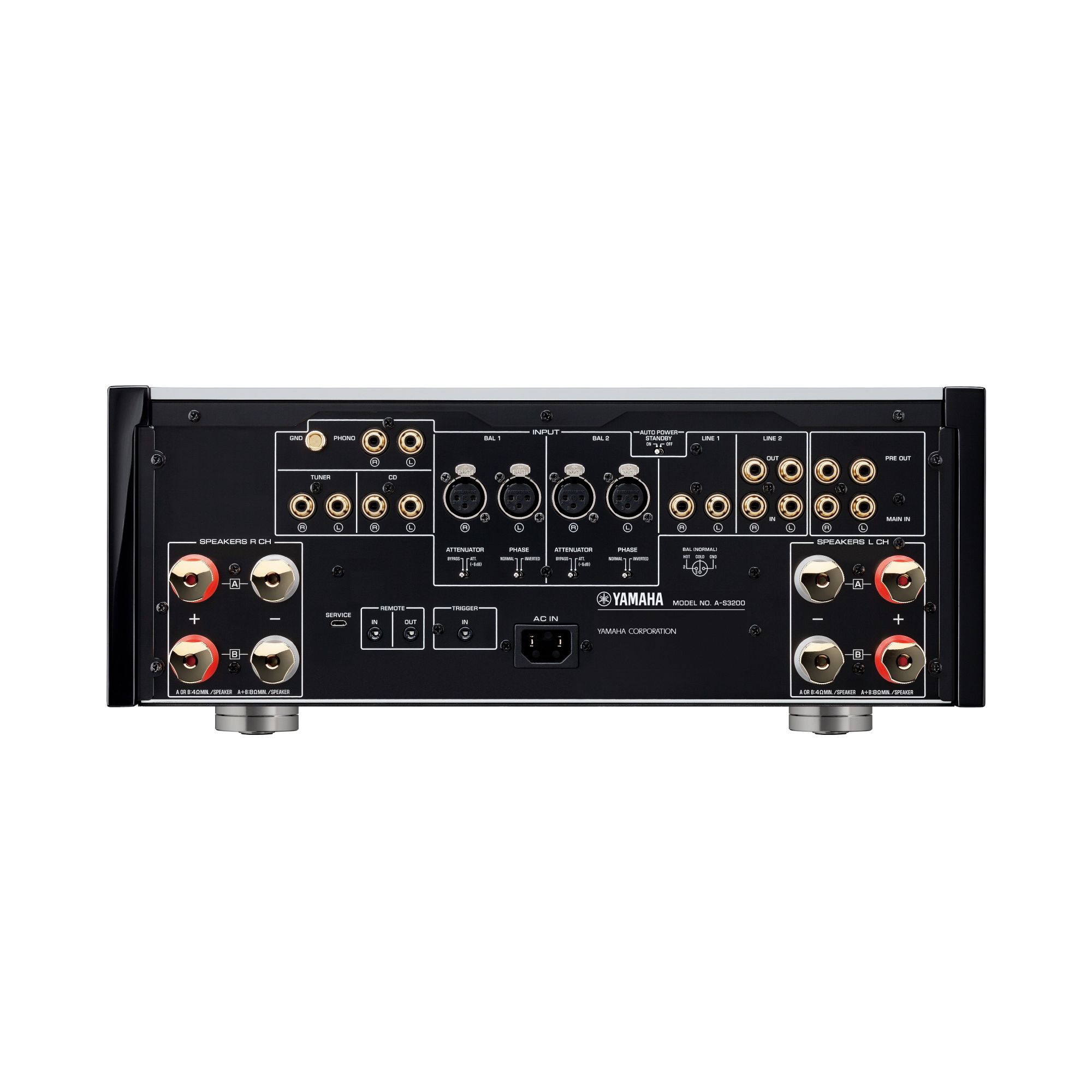
One input for turntable is the same here as on the A-S2200, and it can be used with most MM and MC pickups on, but does not have a switch to match the load similar to that found on the preamplifier C-5000, where you can select the load impedance in four steps: 10, 30, 100 and 300 Ohm. Here it is fixed at 50 ohms.
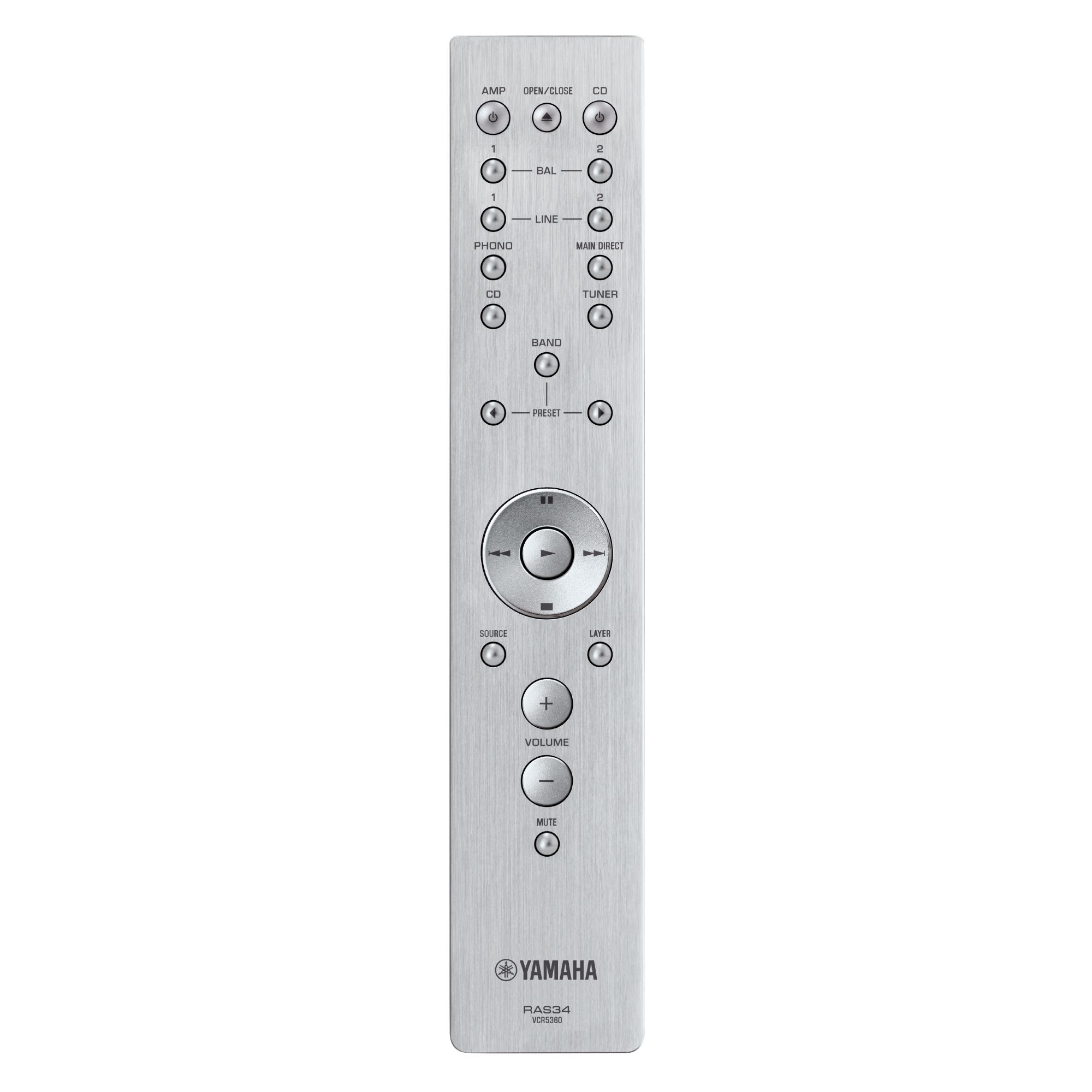
Soft as velvet, smooth as silk
The larger and slightly more powerful 3200 sounds like a 2200, but there are differences that – at least for some, can matter. They share the same outstanding and super-detailed turntable input that really makes Keith Jarrett’s Köln Concerto sing in the room, and with an Orthophon Cadenza Bronze, the soundscape opens up and you get a magnificent soundscape.
Just like on a 2200.
But there are some differences worth mentioning. Whether the sound source is a MC cartridge or a CD player, it turns out that 3200 does some things better than 2200. The sound is the same, but it sounds a little more of the piano tones here, and there is more dynamic contrast in the lowest octave .
Strings and vocals sound freer, and there are several micro details in the soundscape of e.g. classical music. An a-b test with 2200 showed that the differences are subtle but noticeable. The more expensive Yamaha amplifier has slightly better control of the two 15-inch woofers in a JBL Synthesis 4369, and the treble from the compression horn is experienced as – again a little – better resolved with 3200.
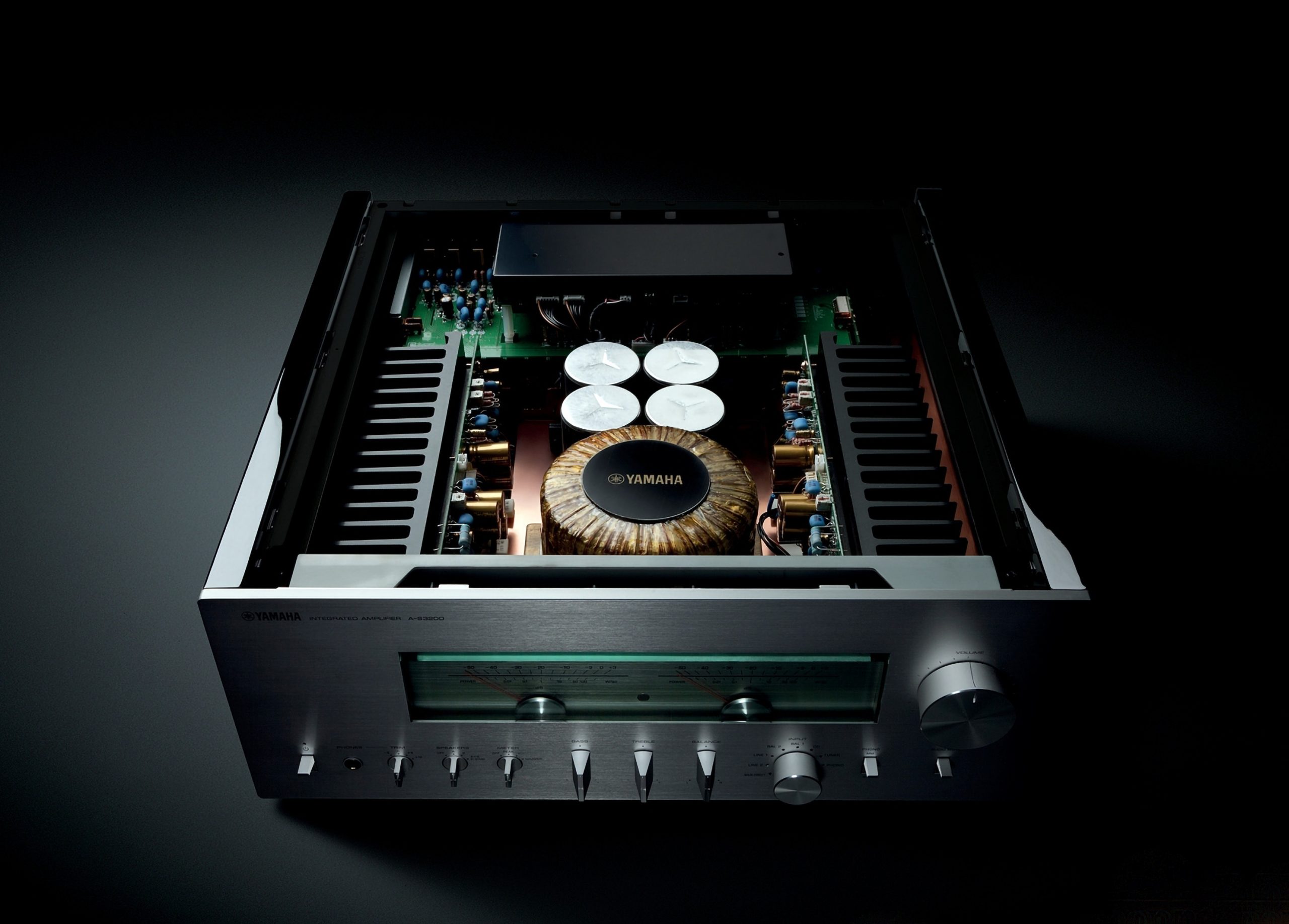
Switching between the amplifiers gave me no wow experience in terms of differences in sound quality, I could have lived happily with both, but for more demanding speakers you may get left to choose 3200 instead of 2200.
Although on paper there are no power differences.
On the smaller Yamaha NS-3000, the differences were even smaller, but also here I experienced a little better grip on the lowest notes, and a more fine-meshed reproduction of details, and more airy overtones. Whether it is worth the extra expense is another matter.
It shines, no lights of the A-S3200 on vocals. It does not matter if it is the mezzo-splendor of Ceciilia Bartoli, or the semi-falsetto of Thomas Dybdahl. The amplifier serves the vocals on a gold-colored dish with a silk veil, and even the most elusive shades come out well in the big soundscape.
Like the A-S2200, the bass reproduction is of the quality you expect when you span more than 300 w amplifier for a pair of large speakers. On Kari Bremnes Togsang, you can feel the bass in the diaphragm, even from the small NS-3000, and it sparkles by Al Jarreau’s Cold Duck, while the bass Leonard Cohen’s Everybody Knows rock at a fast pace into the room and contribute greatly to a realistic live -experience.
A Hegel H390 will sound tighter and maybe a little better controlled when playing really loud, and a McIntosh MA352 will add a warmer touch of amber to the music, but the Yamaha amplifier creates more air and timbre in the soundscape.
Conclusion
The Yamaha A-3200 may not be as much better than the A-S3200 as the price difference indicates, and although the difference is subtle, it is a little better resolved, a little better controlled, and it has a little better dynamic control and contrast. Forget the stated effect, in practice you notice that it has much more torque than we are used to from 100 watts, and at the same time it plays so divinely beautiful and engaging that you can be touched by less. With the A-S3200 you can play anything, you only need good signal sources and a pair of serious speakers, then you have a system for life.
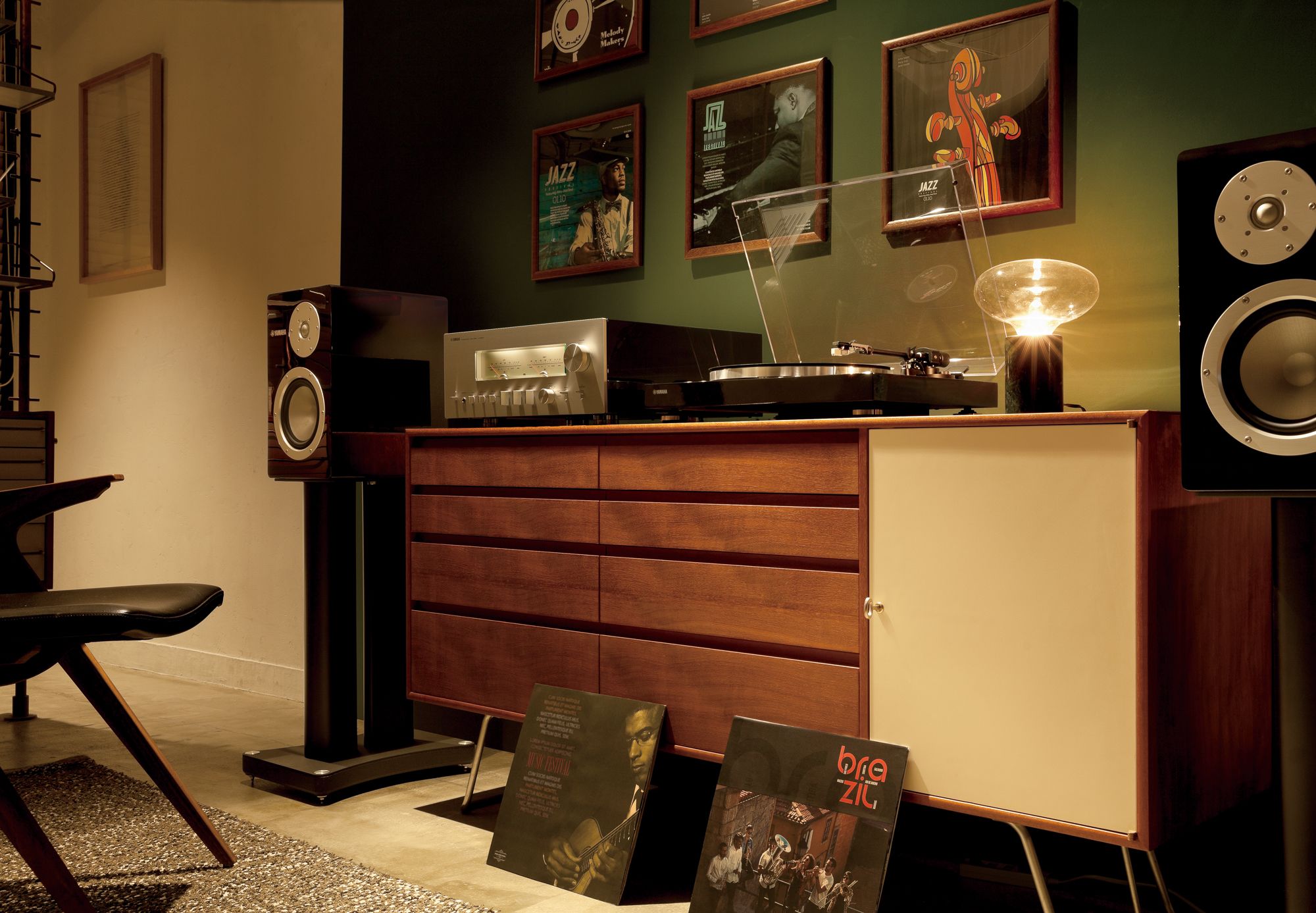

We think
Beautiful timbres full of nuances and details. Plays bass with convincing authority and at the same time sounds sublime on demanding acoustic music. Very well-sounding phono input. No digital inputs, or network connection, Missing adjustments on the turntable input.
5000 €
Specifications
- Type: Integrated amplifier
- Power: 2 x 100 w 8 ohms, 2 x 150 w 4 ohms
- Technology: Transistor, class AB
- Connections: 5 unbalanced, two balanced XLR, pre-out, direct in
- Turntable input: MC 150 uV / 50 ohm, MM 3.5 mV / 47 kohm
- Headphone output: Discrete circuit
- DAC: No.
- Network: No.
- Frequency range: +0, -3 dB, 5 Hz – 100 kHz
- Dynamics: Not stated
- THD: 0.005%
- Signal / noise: 110 dB CD, 96 dB MM, 90 dB MC
- Other: Remote control. Silver. el sort.
- Dimensions and weight: 43.5 x 18 x 46.3 cm / 24.7 kg
- Web: uk.yamaha.com
